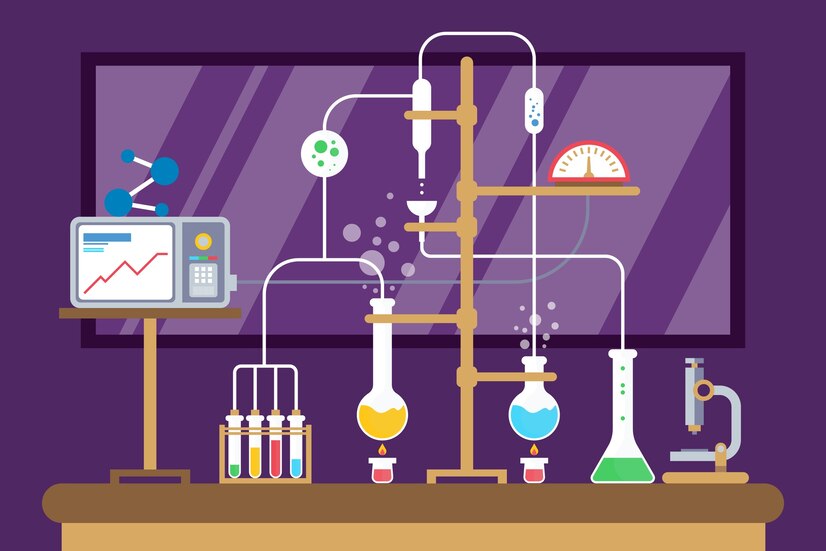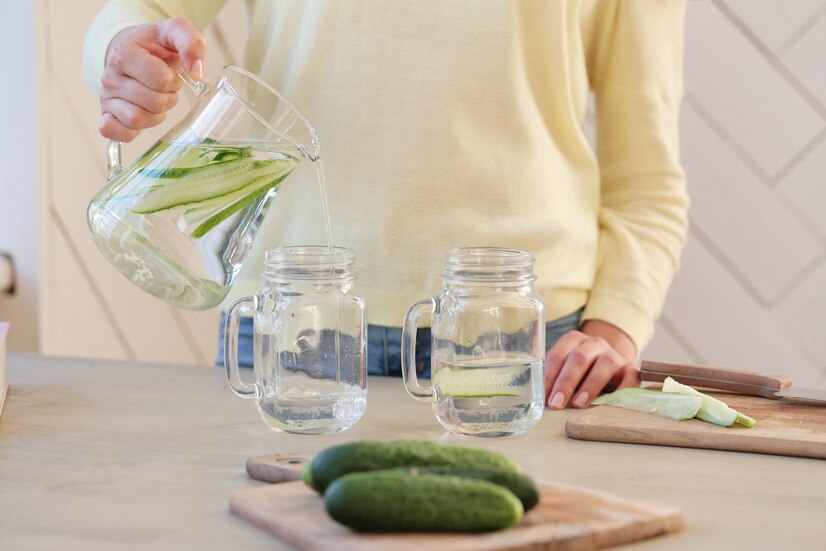In the world of cooking, science, and daily life, understanding measurements like ounces and gallons is crucial. Whether you’re mixing a recipe, conducting experiments, or simply trying to meet your daily water intake, knowing how to convert between these units can simplify your tasks and ensure accuracy.
This guide not only provides essential conversion charts from ounces to gallons and vice versa but also explores the differences between the US Customary and Imperial measurement systems.
Dive into this concise and practical resource to master these conversions, and discover why such knowledge is indispensable in various aspects of everyday life.
Understanding the Basics
What is an Ounce?
An ounce, specifically a fluid ounce in this context, is a unit of volume used primarily in the United States and the United Kingdom to measure liquids. In the US measurement system, one fluid ounce equals approximately 29.57 milliliters, whereas in the UK system, it is slightly more, at about 28.41 milliliters. This unit is commonly used in recipes, nutrition labeling, and more.
What is a Gallon?
A gallon is a larger unit of volume used in both the US and the UK, but they are not the same. The US gallon, used mostly in the United States, is defined as 231 cubic inches, which is about 3.785 liters. On the other hand, the Imperial gallon, which is used in the United Kingdom, Canada, and some Caribbean countries, is larger, at approximately 4.546 liters. The gallon is often used for larger volumes of liquids such as gasoline or milk.
US vs. UK Differences
Understanding the distinction between the US and UK gallons is crucial, especially in activities involving precise volume measurements like cooking or chemical mixing, where using the wrong measurements can lead to drastically different outcomes. The US gallon is smaller than the UK gallon, a fact that can cause significant confusion. For example, when a recipe or a machine setup calls for a gallon of liquid, knowing which measurement standard to use is essential to achieving the desired results.
By mastering these fundamental units of measure, you ensure greater accuracy in everyday tasks and professional undertakings that require fluid measurements. Knowing these differences and how to convert between them, which will be covered in the subsequent sections, is an invaluable skill that enhances efficiency and precision in a globalized world.
Systems of Measurement Explained
Understanding different measurement systems is essential for accurately handling recipes, scientific experiments, and various industrial applications. Here, we delve into the US Customary System and the Imperial System, highlighting their differences and the significance of the Metric system in global context.

US Customary System vs. Imperial System
The US Customary System and the Imperial System are both derived from the English units used historically in the British Empire, but they have evolved differently over the centuries. While they share some unit names, such as gallons and ounces, the quantities they represent can differ.
- US Customary System: Predominantly used in the United States, this system defines units based on agreed standards. The US gallon is defined as exactly 231 cubic inches, which is about 3.785 liters. The fluid ounce in this system is 1/128th of a US gallon, equating to about 29.57 milliliters.
- Imperial System: Used in the United Kingdom and some other Commonwealth countries, this system was defined in 1824 to standardize measurements across the British Empire. The Imperial gallon is larger than the US gallon, defined as 10 pounds of water at a specific temperature, equating to about 4.546 liters. Consequently, an Imperial fluid ounce is 1/160th of an Imperial gallon, approximately 28.41 milliliters.
Differences between the Metric and Imperial systems
The Metric system is an internationally agreed decimal system of measurement, adopted by most countries worldwide because it is considered easier and more precise for scientific and international trade applications. It uses units such as meters for length, liters for volume, and grams for weight.
- Conversion Simplicity: One of the major advantages of the Metric system is its ease of conversion, using multiples of ten (e.g., 1000 milliliters in a liter, 100 centimeters in a meter). This contrasts sharply with the Imperial system, where conversions involve different numbers (e.g., 12 inches in a foot, 3 feet in a yard).
- Global Standardization: The Metric system facilitates international collaboration and standardization crucial in global trade, science, and engineering. While the US still uses the US Customary System for many domestic purposes, scientists and industries often use Metric measurements due to their universal acceptance and precision.
Understanding these systems and their conversions is not just academic but a practical necessity in today’s interconnected world. Whether you’re traveling, cooking international recipes, or working in a scientific field, familiarity with both systems and their conversions ensures accuracy and ease in various tasks.
Detailed Conversion Guides
Converting measurements between ounces and gallons, whether in the US or the UK system, is crucial for many everyday tasks. This section provides step-by-step guides on how to convert fluid ounces to gallons and vice versa, enhancing precision in cooking, mixing, or any activity requiring accurate liquid measurements.
How to Convert Fluid Ounces to Gallons
Converting fluid ounces to gallons is straightforward once you remember the specific conversion ratios:
- US Measurements: In the US system, 1 gallon equals 128 fluid ounces. To convert fluid ounces to gallons, divide the number of ounces by 128.
- Formula: Gallons = Fluid Ounces / 128
- UK Measurements: In the UK system, 1 gallon equals 160 fluid ounces. To convert fluid ounces to gallons in the Imperial system, divide by 160.
- Formula: Gallons = Fluid Ounces / 160
These formulas will help you accurately convert fluid ounces into gallons, ensuring you adhere to recipes or measurement instructions correctly.
Converting Gallons to Fluid Ounces (US and UK)
To convert gallons back to fluid ounces, you’ll use the inverse of the previous conversions:
- US Measurements: Multiply the number of gallons by 128 to find the equivalent number of fluid ounces.
- Formula: Fluid Ounces = Gallons × 128
- UK Measurements: Multiply the number of gallons by 160 to convert to fluid ounces.
- Formula: Fluid Ounces = Gallons × 160
Conversion from Gallons and Fluid Ounces to Metric Units
For those needing to convert gallons and fluid ounces into metric units, which is often required in scientific contexts or countries using the metric system, use these conversions:
- From US Gallons to Liters: Multiply the number of gallons by 3.785.
- Formula: Liters = US Gallons × 3.785
- From UK Gallons to Liters: Multiply the number of gallons by 4.546.
- Formula: Liters = UK Gallons × 4.546
- From US Fluid Ounces to Milliliters: Multiply the fluid ounces by 29.57.
- Formula: Milliliters = US Fluid Ounces × 29.57
- From UK Fluid Ounces to Milliliters: Multiply the fluid ounces by 28.41.
- Formula: Milliliters = UK Fluid Ounces × 28.41
These formulas provide an essential toolkit for anyone needing to switch between systems or prepare for activities that require precise volume measurements in different units. Whether you are cooking using a foreign recipe, participating in international trade, or working in a scientific environment, understanding these conversions ensures accuracy and consistency in your measurements.
Practical Conversion Charts
For quick and accurate conversions between fluid ounces, gallons, and other volume units, well-organized conversion charts are indispensable. These charts are helpful in kitchens, labs, and many other settings where precise volume measurements are critical. Below, you’ll find detailed conversion charts for both US and UK measurements, as well as charts converting these measurements into metric units.

US and UK Gallon to Fluid Ounces Conversion Charts
These charts provide a quick reference for converting gallons to fluid ounces and vice versa in both measurement systems:
| US Conversion Chart | UK Conversion Chart |
|---|---|
| 1 Gallon (US) = 128 Fluid Ounces (US) | 1 Gallon (UK) = 160 Fluid Ounces (UK) |
| 1 Quart (US) = 32 Fluid Ounces (US) | 1 Quart (UK) = 40 Fluid Ounces (UK) |
| 1 Pint (US) = 16 Fluid Ounces (US) | 1 Pint (UK) = 20 Fluid Ounces (UK) |
| 1 Cup (US) = 8 Fluid Ounces (US) | 1 Cup (UK) = 10 Fluid Ounces (UK) |
These charts allow for quick calculations when adjusting recipes or converting measurements for various uses, ensuring that the correct volume is used or obtained.
Fluid Ounces to Gallons Conversion Charts
For converting smaller units to larger ones efficiently, these charts are particularly useful:
| US Fluid Ounces to Gallons | UK Fluid Ounces to Gallons |
|---|---|
| 16 Fluid Ounces (US) = 0.125 Gallons (US) | 40 Fluid Ounces (UK) = 0.25 Gallons (UK) |
| 32 Fluid Ounces (US) = 0.25 Gallons (US) | 80 Fluid Ounces (UK) = 0.5 Gallons (UK) |
| 64 Fluid Ounces (US) = 0.5 Gallons (US) | 160 Fluid Ounces (UK) = 1 Gallon (UK) |
| 128 Fluid Ounces (US) = 1 Gallon (US) |
Metric Conversion Charts
For international applications or scientific measurements where the metric system is standard, these charts convert US and UK units to metric units:
| US to Metric | UK to Metric |
|---|---|
| 1 Fluid Ounce (US) = 29.57 Milliliters | 1 Fluid Ounce (UK) = 28.41 Milliliters |
| 1 Gallon (US) = 3.785 Liters | 1 Gallon (UK) = 4.546 Liters |
These charts are particularly useful for those engaging in activities that span different regions or scientific disciplines, ensuring that measurements are accurate and consistent regardless of the system used. Whether converting recipes from one country to another or conducting experiments that require precise volume measurements, these conversion charts are essential tools for achieving success in your endeavors.
Special Considerations in Measurements
Accurately measuring liquids requires understanding the distinctions between wet and dry measurements and recognizing the differences between fluid ounces and dry ounces. This section explores these concepts to ensure precision in both cooking and scientific contexts.
Differences between Wet and Dry Measurements
In the world of cooking and baking, the distinction between wet and dry ingredients is critical because each type requires a different method of measurement to ensure accuracy:
- Wet Measurements: These are typically made using liquid measuring cups, which are designed to measure volume. Ingredients like water, milk, and oil are measured by pouring them into the cup up to the desired level.
- Dry Measurements: Dry ingredients like flour, sugar, or grains are measured using dry measuring cups, which allow you to fill the cup and level off the excess with a straight edge. This method is preferred for dry ingredients to avoid packing and ensure consistent measurements.
Understanding when to use each type of measuring tool is key to accuracy in recipes and helps prevent common cooking errors.
Wet vs. Dry Ounces
Ounces can refer to both volume (fluid ounces) and weight (dry ounces), and confusing these can lead to significant discrepancies in recipes and scientific formulations:
- Fluid Ounces (Volume): This unit is used for measuring liquids and is defined as the volume occupied by one ounce of water at a specific temperature and pressure, equating to about 28.35 mL in the Imperial system and 29.57 mL in the US system.
- Dry Ounces (Weight): A dry ounce is used to measure weight and is a standard unit in both the Imperial and US systems. It’s important to note that the weight of one dry ounce of any substance may occupy a different volume than one fluid ounce of water due to density differences.
What is the Difference Between Ounces and Gallons?
Understanding the relationship between ounces and gallons is crucial, especially in activities requiring large volume conversions:
- Scale of Measurement: Ounces are much smaller units compared to gallons. In the US system, it takes 128 fluid ounces to make one gallon, while in the UK system, it takes 160 fluid ounces.
- Application in Real World: This conversion is frequently used in scenarios ranging from fuel purchases in gallons to beverage servings in ounces. Knowing how to convert between these units accurately is essential for activities such as brewing, cooking large meals, or managing fuel usage.
By grasping these distinctions and applying the correct methods of measurement, you can avoid common mistakes and ensure precision in both everyday and professional tasks. This knowledge is particularly vital in industries like culinary arts, pharmaceuticals, and any field where precise measurements are paramount.
Everyday Applications
Understanding conversions between ounces and gallons is not only academically useful but also applicable in everyday scenarios such as cooking, health, and daily hydration. This section explores practical tips and examples to illustrate the importance of these conversions in daily life.

Practical Tips for Daily Water Intake
One of the most common health advice pieces is about the intake of water to maintain hydration. Here’s how to use gallon and ounce measurements to meet your daily water needs:
- General Guideline: It’s often recommended that adults drink eight 8-ounce glasses of water per day, which equates to about half a gallon (64 ounces) of water.
- Customization for Individual Needs: Depending on physical activity levels, climate, and individual health, some people might need more than just half a gallon. Knowing how to quickly convert between ounces and gallons can help you tailor your water intake to your specific needs.
- Using Conversion Charts: Keeping a conversion chart handy in the kitchen or office can serve as a quick reference to ensure you are drinking enough water throughout the day without having to calculate each time.
Application in Recipes and Daily Measurements
Many recipes, especially those from different regions, will use different units of measurement for liquids:
- Recipe Conversion: When cooking international recipes, you may find measurements in gallons or fluid ounces depending on the origin of the recipe. Converting these measurements to the unit you are familiar with helps in accurately following the recipe.
- Scaling Recipes: For events where large quantities of food are needed, such as parties or large family gatherings, you may need to scale your recipes. This often involves converting measurements from cups and tablespoons (small quantities) to gallons (large quantities), ensuring consistency in taste and texture.
Managing Daily Measurements in Various Contexts
- Fuel Purchases: In countries like the United States, fuel is sold by the gallon, while in others, it’s sold by the liter. Understanding how to convert between these measurements can help you understand fuel efficiency better and manage costs.
- Gardening and Watering: Knowing how many ounces are in a gallon can aid in mixing water with fertilizers or pesticides accurately, which is crucial for the health of your plants.
By integrating these conversion skills into daily life, you enhance your efficiency and ensure greater precision in various tasks. Whether it’s staying hydrated, cooking, or managing household activities, being adept at converting between ounces and gallons can simplify and improve many aspects of everyday life.
Historical and Theoretical Background
Understanding the historical context and theoretical foundations of measurement units like ounces and gallons provides valuable insight into their usage and importance. This section delves into the origins of these measurements and the mathematical formulas used for conversions.
A Quick History Into the Units of Measurements
The use of ounces and gallons can be traced back several centuries, rooted in the systems of trade and commerce across different civilizations:
- Origin of the Gallon: The gallon originated in medieval England as a unit for measuring wine and beer. Historically, it was defined based on the volume of 10 pounds of water, a measurement that has been refined over time to fit different standards, including the US and UK gallons.
- Origin of the Ounce: The ounce comes from the Roman “uncia,” which was one-twelfth of the Roman “libra” or pound. Over time, the ounce was adopted and adapted by various systems, including the troy and avoirdupois systems, which define ounces slightly differently depending on their application in weighing precious metals or general goods, respectively.
Mathematical Formulas for Conversions
To convert between ounces and gallons and to understand the theoretical underpinnings of these conversions, the following mathematical formulas are essential:
- Fluid Ounces to Gallons (US and UK):
- In the US system: Gallons=Fluid Ounces128Gallons=128Fluid Ounces
- In the UK system: Gallons=Fluid Ounces160Gallons=160Fluid Ounces
- Gallons to Fluid Ounces (US and UK):
- In the US system: Fluid Ounces=Gallons×128Fluid Ounces=Gallons×128
- In the UK system: Fluid Ounces=Gallons×160Fluid Ounces=Gallons×160
- From US/UK Units to Metric:
- Liters=US Gallons×3.785Liters=US Gallons×3.785 (for US gallons to liters)
- Milliliters=US Fluid Ounces×29.57Milliliters=US Fluid Ounces×29.57 (for US fluid ounces to milliliters)
These formulas not only facilitate practical conversions but also reveal the logical structure behind unit measurement systems, emphasizing their mathematical precision and necessity in ensuring accuracy across various applications.
Why This Conversion is Important
Understanding these units and their conversions is crucial for accurate measurement and consistency across various fields, including cooking, science, and industry. The historical development of these units shows the evolution of human society’s need for standardization and precision in measurement, reflecting broader socio-economic changes.
By appreciating both the historical context and the mathematical basis of these measurement units, users can apply this knowledge more effectively in both everyday and professional scenarios, ensuring precision and efficiency in tasks that require accurate volume measurements.
Helpful Tools and Resources
To effectively manage and apply conversions between ounces and gallons, several tools and resources can significantly enhance accuracy and convenience. This section outlines some of the most recommended measuring tools and where to find helpful conversion charts.

Recommended Measuring Tools
For accurate measurement in cooking, crafting, and various scientific applications, having the right tools is crucial. Here are some essential tools:
- Liquid Measuring Cups: These are specifically designed for measuring liquids and have markings in ounces and milliliters. They allow for precise measurement of volumes, crucial in baking and cooking.
- Digital Scales: These scales can measure both dry and wet ingredients in ounces, grams, and pounds. For recipes requiring precise weight measurements, digital scales are indispensable.
- Measuring Spoons: Often used for both dry and liquid ingredients, measuring spoons are necessary for adding small amounts of ingredients accurately.
- Adjustable Measuring Cups: These are particularly useful for measuring sticky ingredients like honey or peanut butter. They allow for adjustments in volume to ensure exact measurements.
Downloadable Conversion Charts
Having a conversion chart on your kitchen wall, in your workspace, or saved on a mobile device can save time and eliminate the need for mental calculations. Here are suggestions for obtaining these charts:
- Online Resources: Many cooking websites and educational portals offer free, printable conversion charts that include conversions between US and UK measurements and metric units.
- Apps: Several smartphone applications are designed to convert measurements quickly. These can be especially useful when shopping or cooking in places where different measurement standards are used.
- Custom Charts: For specific needs, custom conversion charts can be created using spreadsheet software like Excel. These can be tailored for specific projects or recipes.
Our Favorite Measuring Tools
To make the most of your measuring experience, consider investing in high-quality tools that provide longevity and precision:
- Pyrex Measuring Cups: Known for their durability and accuracy, Pyrex glass measuring cups are ideal for liquids and come with easy-to-read markings.
- OXO Good Grips Measuring Tools: These tools are designed with user comfort and accuracy in mind. Their handles ensure a good grip, and clear markings make reading measurements easy.
- Escali Digital Scales: Known for their precision and versatility, Escali scales can switch between measurement modes, making them perfect for those needing flexibility in measurement units.
By utilizing these tools and resources, you can enhance your precision in various tasks, ensuring successful outcomes whether you’re cooking a new recipe, engaging in crafts, or conducting experiments. These tools not only facilitate ease and accuracy but also add an element of reliability to any project involving measurements.
Conclusion
In conclusion, mastering the conversion between ounces and gallons is more than just a numerical exercise—it’s a practical skill that enhances efficiency and accuracy in the kitchen, in scientific work, and in everyday life. Whether you’re adjusting recipes, managing your hydration, or working on projects that require precise volume measurements, understanding these conversions is essential.
By utilizing the detailed guides, conversion charts, and recommended tools provided in this article, you can ensure that you’re equipped to handle any task that involves these measurements with confidence and precision. As we navigate through various systems of measurement, from the US Customary to the Imperial and the Metric systems, this knowledge becomes indispensable in our increasingly interconnected world.
FAQs
1. What is the difference between a US gallon and a UK gallon?
A US gallon is smaller, containing 128 US fluid ounces, equivalent to about 3.785 liters. A UK gallon is larger, holding 160 UK fluid ounces, which is approximately 4.546 liters.
2. How many fluid ounces are there in one US gallon?
There are 128 fluid ounces in one US gallon.
3. How do you convert fluid ounces to gallons?
To convert fluid ounces to gallons, divide the number of fluid ounces by 128 for US measurements or by 160 for UK measurements.
4. Can I use the same measuring tools for both dry and liquid ingredients?
It’s best to use liquid measuring cups for liquids for accuracy and dry measuring cups for dry ingredients to avoid measurement errors.
5. Where can I find a conversion chart for ounces to gallons?
Conversion charts can be found online on cooking websites, educational resources, or through smartphone apps that provide quick measurement conversions. You can also create a custom chart using spreadsheet software for specific needs.





